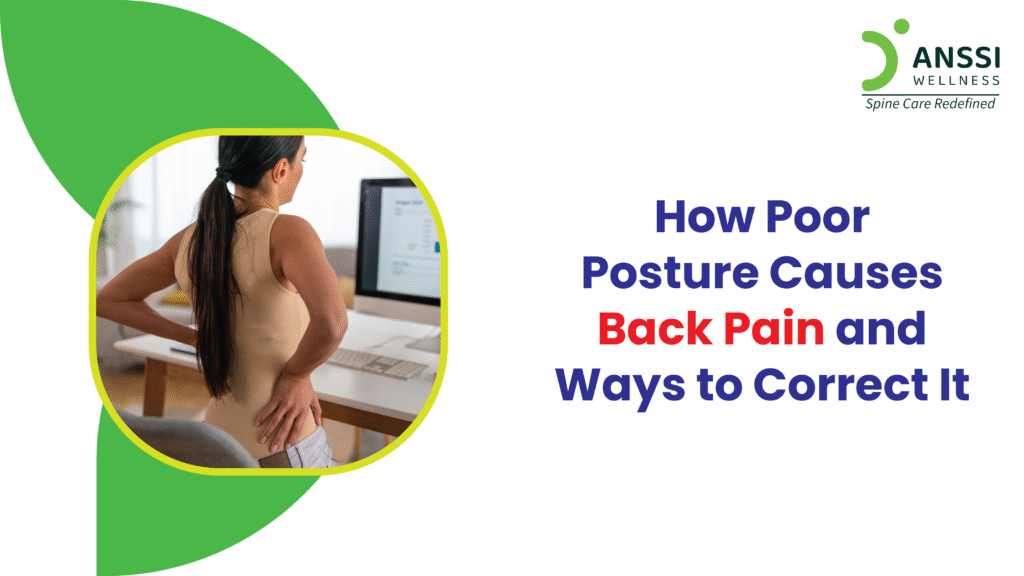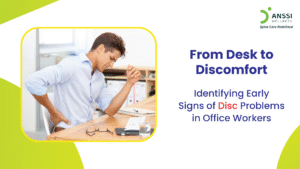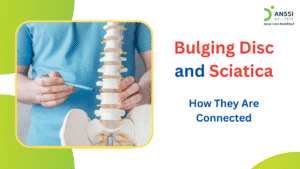In today’s fast-paced digital world, poor posture has become a silent but significant contributor to back pain.
Whether it’s slouching at your desk, hunching over a smartphone, or standing with a forward-leaning neck, these habits can gradually strain the spine. Over time, bad posture not only leads to discomfort but can cause chronic back pain and spinal issues.
Understanding the link between posture and back pain is crucial for preventing long-term damage and improving your overall quality of life.
Understanding the Link Between Posture and Back Pain
The human spine is designed to support the body’s weight and allow for flexible movement while maintaining an S-shaped curve for balance and shock absorption. Poor posture disrupts this natural alignment. When you consistently sit or stand incorrectly, it places abnormal stress on the muscles, joints, and intervertebral discs.
For example:
- Slouching forward can weaken core muscles, overstretch spinal ligaments, and compress the discs in your lower back.
- Forward head posture increases the load on the cervical spine, which can lead to neck stiffness, upper back pain, and headaches.
Over time, these mechanical stresses can cause or worsen conditions like spondylosis, herniated discs, and sciatica.
Muscle fatigue, inflammation, and reduced blood flow are common outcomes of sustained poor posture. What may start as mild discomfort can quickly progress into persistent, debilitating pain if not addressed.
Common Postural Mistakes That Lead to Back Pain
Many postural mistakes are made unconsciously throughout the day. Some of the most common ones include:
- Forward Head Posture: This occurs when the head juts out beyond the shoulders, often from prolonged phone or computer use. It strains the neck and upper back muscles.
- Rounded Shoulders: Caused by slumping or hunching, this posture tightens the chest and weakens the upper back, leading to mid-back pain.
- Exaggerated Lumbar Curve (Hyperlordosis): Often due to weak abdominal muscles or wearing high heels frequently, this posture puts stress on the lower back.
- Slouching While Sitting: Common during long hours at a desk or on a couch, slouching flattens the natural spinal curve and adds pressure to the lumbar discs.
- Standing with Uneven Weight Distribution: Leaning on one leg or sticking out a hip misaligns the spine and hips, potentially causing pain in the lower back or sacroiliac joints.
Recognising and correcting these habits early can significantly reduce the risk of chronic back problems.
Corrective Strategies to Improve Posture and Relieve Back Pain
Fortunately, bad posture can be corrected through a combination of awareness, lifestyle changes, and specific exercises.
Here are some effective strategies:
Practise Mindful Sitting and Standing
Sit with your feet flat on the ground, knees at hip level, and your back straight against the chair. While standing, distribute weight evenly across both feet, keep your shoulders relaxed, and engage your core.
Ergonomic Adjustments
Ensure your workstation is spine-friendly. Your computer screen should be at eye level, and your chair should offer good lumbar support. Use an adjustable chair and desk setup to promote neutral spine alignment.
Posture Exercises and Stretches
Incorporate exercises that strengthen your postural muscles and promote spinal flexibility:
- Chin Tucks: Pull your chin back while keeping your head level to align the head with the spine.
- Shoulder Blade Squeezes: Squeeze your shoulder blades together to activate the upper back muscles.
- Cat-Cow Stretch: In the tabletop position, switch between sinking your back toward the floor (cow) and arching it (cat). This mobilises the spine and relieves tension in the back.
- Wall Angels: Stand against a wall and move your arms in a “snow angel” motion to strengthen the shoulders and upper back.
Regular Movement and Supportive Tools
Avoid sitting or standing in one position for too long. Take short breaks every 3060 minutes to stretch or walk around. Set reminders to perform posture checks throughout the day.
Consider using lumbar support cushions, posture-correcting braces (as recommended by a physiotherapist), and supportive footwear to reduce strain on the back.
Non-Surgical Treatments for Postural Back Pain
For chronic back pain caused by poor posture, non-surgical treatments can offer lasting relief:
- Physiotherapy: A physiotherapist can create a tailored exercise program to strengthen weak muscles, relieve tension, and improve spinal alignment.
- Non-Surgical Spinal Decompression Treatment: This non-invasive treatment gently stretches the spine to relieve pressure on compressed discs and nerves, which is particularly effective for conditions like herniated discs or sciatica.
- Posture Retraining Programs: These help patients relearn healthy movement and sitting habits to prevent recurring pain.
About ANSSI:
ANSSI Wellness focuses on improving the quality of life for patients suffering from spinal issues, aiming to provide relief where other conventional treatments have failed. Through advanced non-surgical spinal decompression treatment, ANSSI is committed to helping patients avoid surgery and recover in a safe, effective, and compassionate environment.
Connect with ANSSI Wellness on LinkedIn, Instagram, and Facebook for expert guidance.



